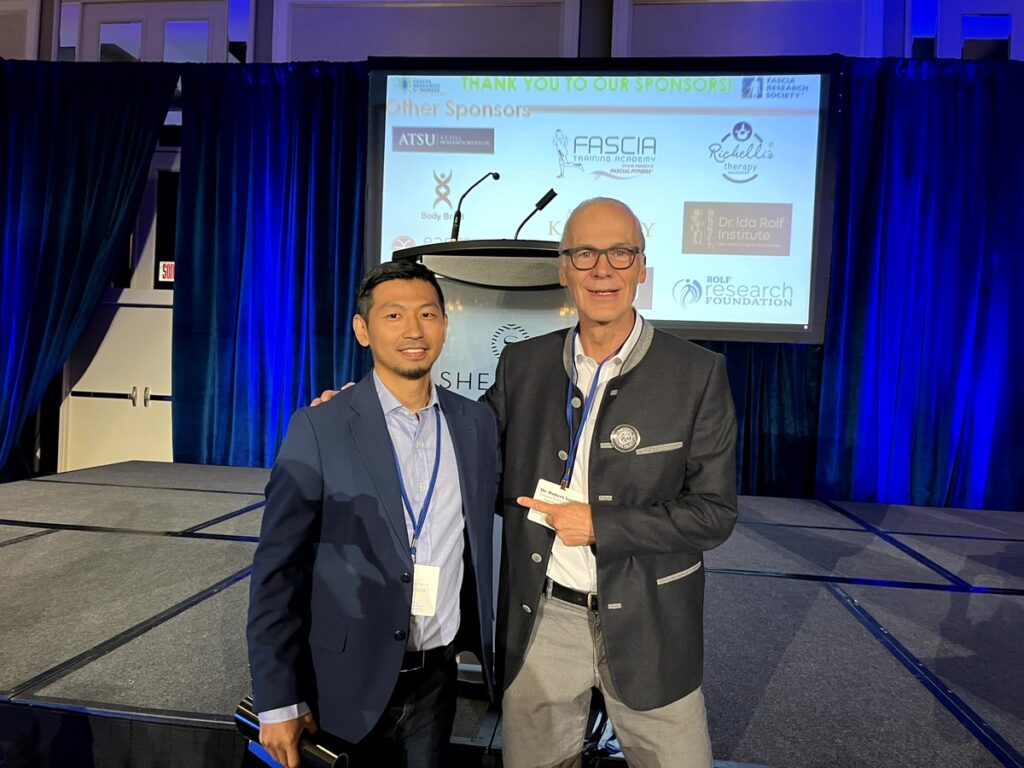Mixed Martial Arts (MMA) is a sport that demands rigorous physical training and out-of-the-box techniques that can give fighters an edge over their opponents. And in recent years, fascia training has been the buzzword in the MMA world. Fascia is a connective tissue that surrounds and supports the body’s muscles, bones, and organs, and focusing on it can improve fighters’ performance, reduce injuries, and reduce recovery time. This is where Coach Chong comes in – he’s a well-known fascia coach who’s been a game-changer in introducing and refining the art of fascia training for MMA fighters and athletes including UFC Champion Zhang Weili, Mickey Gall and Alistair Overeem. This article will explore the science behind fascia training, its benefits for MMA fighters and athletes, and how Coach Chong’s unique approach has taken fighters to new heights.
First, let’s talk about what Fascia is. Coach Chong and Dr. Robert Schleip held a joint webinar about Fascia and its overlooked function in Sports and Movement. Coach Chong says, “Fascia is the connective tissue surrounding and supporting the body’s muscles, bones, and organs. It’s responsible for providing support, stability, and mobility to the body and plays a crucial role in movement. However, it’s often overlooked in traditional training methods.”
So, why is Fascia important for athletic performance?
“When the fascia web is disorganized, even when the fascia wrapping angle changes around the muscle[1], it can limit mobility and lead to problems with muscle contraction,” explains Coach Chong. “Focusing on fascia training can improve strength, reduce the risk of injury, and speed up recovery time.”
But how does Hyperarch fascia training differ from traditional training methods? Coach Chong’s approach to fascia training is unique because it emphasizes a holistic approach to fitness and he claims it is reverse engineered from the best athletes in the world. “It’s not just about doing specific exercises aimlessly. It’s about addressing the underlying fascia issues contributing to fascia adhesions and performance limitations. This includes focusing on breathing, mental visualization, lifestyle changes, and specific fascia training exercises.”
One of Coach Chong’s favorite fascia training exercises is the Hyperarch Hop. “By creating vibration to the fascia tissue, we can break up adhesions and reorganize the structure of the fascia,” he says. “Another effective exercise is mental visualization, which helps to connect the mind to the fascia and prepare it for activity.”
So, what are the benefits of fascia training beyond just improving athletic performance?
“Incorporating Hyperarch Fascia Training into your fitness routine can increase your balance, reduce your risk of injury, and improve your overall coordination and performance,” says Coach Chong. “personalized training can also help with pain management, as it helps address compensatory patterns in the muscles and reduce the load on the joints.”
6 Reasons Why You Need a Health Coach to Finally Reach Your Goals(Opens in a new browser tab)
The Bottom Line
Hyperarch Fascia training has transformed how MMA fighters and athletes approach fitness while helping them reach new heights in their careers. As we have learned from Coach Chong, incorporating Hyperarch Fascia Training into our fitness routines can provide numerous benefits, including increased strength, reduced risk of injury, and improved recovery time. With the help of experts like Coach Chong, we can all unlock our full potential and achieve our fitness goals. So, whether you’re an athlete or simply looking to improve your overall fitness, it’s time to examine your fascia health and fitness.
1. “Internal fluid pressure influences muscle contractile force” David A Sleboda, Thomas J Roberts, https://pubmed.ncbi.nlm.nih.gov/31879350/
2. “The deep fascia and its role in chronic pain and pathological conditions” Flemming Kondrup, Nathaly Gaudreault, Gabriel Venne, https://pubmed.ncbi.nlm.nih.gov/35417568/
